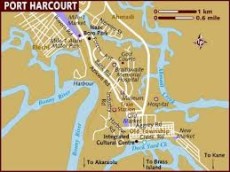
The Jazz Voyager
Port Harcourt Jazz Club: 3, Khana Lane, D/Line, Port Harcourt, Nigeria. Telephone: +234 803 3362062 Fax: +234 84 236772 / Contact: Chris Finebone.
With over 300 members., this jazz club organizes the Annual Opobo Beach Jazz Festival. The club engages both local and international jazz musicians to satisfy the cosmopolitan taste of members in the oil and gas business here week days & weekends.
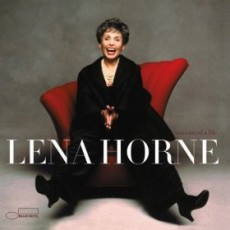
Daily Dose Of Jazz…
Lena Mary Calhoun Horne was born June 30, 1917 in the Bedford-Stuyvesant neighborhood in Brooklyn, New York. Descended from African, European and Native American heritage, her family belonged to what W.E.B. DuBois called “The Talented Tenth”, the upper stratum of middle-class, well-educated blacks.
Her father, Edwin “Teddy” Horne, a numbers kingpin, left the family when she was three and moved to the Hill District in Pittsburgh while her actress mother, Edna Scottron, travelled extensively with a black theatre troupe leaving Lena to be mainly raised by her grandparents. Throughout her formative years she travelled with her mother, lived in Fort Valley and Atlanta, Georgia with a final move back to New York in her teens.
Horne joined the mike chorus of the Cotton Club at 16 becoming a nightclub performer before moving to Hollywood, where she had small parts in numerous movies, and more substantial parts in the films “Cabin in the Sky” and “Stormy Weather. Due to the Red Scare and her left-leaning political views, Horne found herself blacklisted and unable to get work in Hollywood.
Returning to her roots as a nightclub performer, Horne took part in the March of Washington in August 1963, and continued to work as a performer, both in nightclubs and on television, while releasing well-received record albums. She announced her retirement in March 1980, but the next year starred in a one-woman show, “Lena Horne: The Lady and Her Music”, which ran for more than three hundred performances on Broadway and earned her numerous awards and accolades. She continued recording and performing sporadically into the 1990s, disappearing from the public eye in 2000. Lena Horne died on May 9, 2010 in New York City of heart failure.
More Posts: vocal
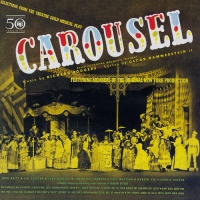
From Broadway To 52nd Street
The Majestic Theatre opened the curtain for Carousel for the first time on April 19, 1945. With music composed by Richard Rodgers and Oscar Hammerstein, the musical ran for eight hundred and ninety performances. John Raitt and Jan Clayton had the title roles in this play adapted from the famous Molnar story of Liliom, from which came two songs that would endear themselves for years as jazz standards – What’s The Use Of Won’drin’ and If I Loved You.
The Story: Billy Bigelow, a shy New England carnival barker falls in love with Julie Jordan. Eventually winning Julie’s heart, he later discovers she is pregnant. Jobless, Billy decides he must provide for his son, or daughter, he agrees to join his criminal friend Jigger Craig in a robbery to earn extra money. The plan misfires and Billy kills himself rather than being caught. Before a heavenly judge he pleads for another chance to return to earth to earn his redemption and see his daughter. When his daughter refuses his gift of a star he has stolen from the sky, he slaps her and returns to purgatory. The widowed Julie and child are left to continue to live starkly. The story is set in Maine where majestic backdrops add emotional emphasis.
Jazz History: It was known simply as The Street and as historian Arnold Shaw stated in his book 52nd Street, “If you flagged a taxi in NYC and asked to be taken to The Street, you would be driven, without giving a number or an avenue, to Fifty-Second Street between Fifth and Sixth Avenues” By the late 1940s, as the jazz clubs turned into strip joints, many bemoaned the death of The Street. They considered this era to be the block’s decline.
In 1948, Time magazine decried the change from jazz to bump-n-grind: “where nightclubs in sorry brownstones crowd each other like bums on a breadline”, an era was all but over. Swing was still there, but it was more hips than horns. Barrelhouse had declined and burlesque was back. There was little jazz left on 52nd Street and even the customers had changed. There were fewer crew haircuts, pipes and sports jackets and more bald spots, cigars and paunches.
Sponsored By
www.whatissuitetabu.com
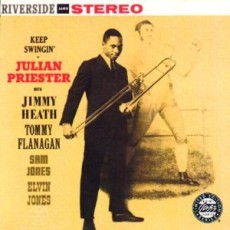
Daily Dose Of Jazz…
Julian Priester was born on June 29,1935 in Chicago, Illinois. He attended DuSable High School studying under Walter Dyett and during his teens he played trombone with Muddy Waters, Dinah Washington, and Bo Diddley and jammed with jazz greats Max Roach, Clifford Brown and Sonny Stitt.
By the early 1950s Priester was a member of Sun Ra’s big band, recording several albums with the group before leaving Chicago in 1956 to tour with Lionel Hampton. Settling in New York in ’58 Julian joined Max Roach’s band and during his tenure recorded two albums as a leader for Riverside Records titled Spiritsville and Keep Swingin’.
In 1961 Priester left Max Roach and for the next eight years took a sideman gig on albums by Freddie Hubbard, Stanley Turrentine, Blue Mitchell, Art Blakey, Joe Henderson, McCoy Tyner, Johnny Griffin and Sam Rivers. During that period he also took part in Coltrane’s Africa/Brass ensemble, which played with Coltrane’s quartet on the album by the same name recorded in 1961. Accepting an invitation to play with Ellington’s big band, he stayed for six months and by 1970 Priester was playing fusion in Herbie Hancock’s sextet.
In 1973, Priester moved to San Francisco, recorded two more albums as a leader, joined the faculty of Cornish College of the Arts in Seattle in 1979 teaching jazz composition, performance and history. Over the course of the next three decades Julian has been a member of the Dave Holland band, returned to play with Sun Ra’s band, became a member of Charlie Haden’s Liberation Music Orchestra, co-led with drummer Jimmy Bennington “Portraits and Silhouettes”, played the 30th Annual Chicago Jazz Festival and made significant contribution to “Alice”, a tribute album to Alice Coltrane.
Trombonist Julian Priester’s musical experience spans to the borders of jazz and beyond, encompassing R&B, bebop, hard bop, and progressive and free jazz.
More Posts: trombone
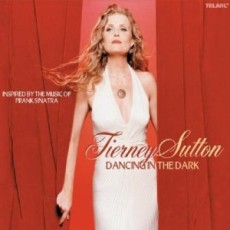
Daily Dose Of Jazz…
Tierney Sutton was born in Omaha, Nebraska on June 28, 1963. A choirgirl as a child, she attended Nicolet High School in Milwaukee, Wisconsin. She matriculated through Wesleyan University where she was introduced to jazz and then went on to Berklee College of Music. The singer took a semi-finalist slot in 1998 in the Thelonious Monk Jazz Vocal Competition, and received an Indie Award nomination for Best Jazz Vocal Album for her 1999 debut recording.
Versatile in the studio and on stage, the three-time Grammy Nominee for “Best Jazz Vocal Album”, has fronted the Tierney Sutton Band for the past 16 years. The group is an incorporated unit that makes all musical and business decisions together, tours worldwide and has played such prestigious venues as Carnegie Hall, the Hollywood Bowl and Jazz at Lincoln Center.
She has lent her voice to films like The Cooler with Alec Baldwin and William H. Macy; Twisted with Samuel L. Jackson, Andy Garcia and Ashley Judd; and an indie titled Blue In Green. Her voice has been heard on commercials for BMW, Dodge, J.C. Penny and Coca-Cola. Tierney has also been performing in a trio format with flautist Hubert Laws and guitarist Larry Koonse.
Sutton also wears an educator’s hat having taught in the Jazz Studies Department at the University of Southern California for 11 years and since 2008 has been the Vocal Department Chair at Los Angeles Music Academy in Pasadena, California. She continues to give workshops and clinics throughout the world.
More Posts: vocal



